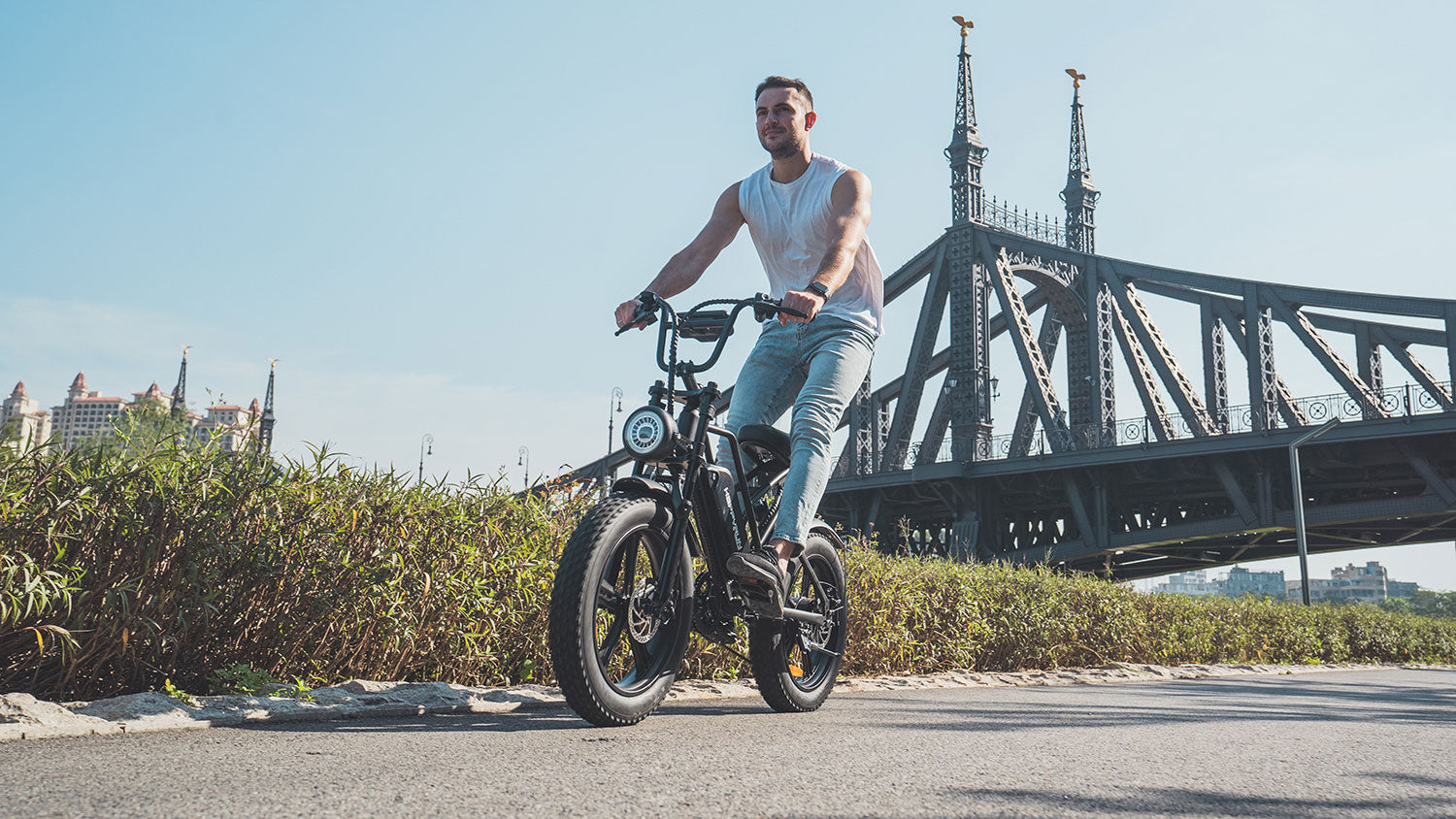
Effective Rust Removal and Prevention Tips for E-Bikes
Riding along scenic trails on your electric bike, you're immersed in the unparalleled beauty of nature. Each turn presents a new landscape, from rolling hills to dense forests, as the sensation of the wind rushing past becomes almost therapeutic. With every pedal, you venture into terrains previously unknown, unveiling the hidden secrets of the great outdoors. This thrill of exploration and freedom is brought to the forefront, especially by specialized e-bikes, such as the agile electric mountain bikes designed for off-road adventures or the robust fat tire e-bike, built to conquer even the most challenging terrains with its impressive traction.
Yet, as the adage goes, with great power comes great responsibility. The same e-bike that offers countless hours of adventure also calls for regular care and attention. Electric bikes, for all their technological marvel and rugged design, are not invincible. One of the most common adversaries that these bikes face is the persistent and pesky problem of rust. The iron components, when exposed to elements like water and oxygen, become vulnerable, leading to the formation of rust. This not only mars the bike's appearance but can also compromise its functionality if not addressed timely. As such, understanding and combating rust becomes a pivotal aspect of e-bike ownership.
Why Does It Rust?
Rust occurs when metal components on your e-bike are exposed to moisture and oxygen, causing oxidation. Rain, humidity, or improper storage accelerates this process. Steel parts like chains, bolts, and frames are most susceptible. Regular cleaning, drying, and applying protective coatings can help minimize rust formation.
Imagine the scenario: after an exhilarating ride through a misty forest or perhaps a journey on a drizzly evening, your e-bike, drenched and dripping, is parked without a second thought. This seemingly harmless act can be the genesis of rust. The combination of moisture from the environment, coupled with the inherent oxygen in the air, becomes a breeding ground for corrosion, especially on the iron-rich components of the bike.
Even the more rugged models, like electric mountain bikes designed for challenging terrains, or the durable fat tire e-bike, built with resilience in mind, aren't entirely rust-proof. Their robust construction might offer some resistance, but over time, without proper care, even these stalwarts can show signs of wear and tear from rust. This highlights the importance of preventive measures and timely intervention to ensure the longevity of your cherished e-bike.
How to Remove Rust from E-Bike?
Use a mixture of baking soda and water or a rust remover solution. Scrub the affected area with a soft brush or cloth. For stubborn rust, use fine-grit sandpaper. Rinse and dry thoroughly. Apply a rust inhibitor or lubricant to prevent future rust. Regular maintenance keeps your e-bike rust-free. Here's a more detailed, step-by-step guide on how to tackle rust:
- Start with Soap and Water
This is the simplest and often most underestimated method. Many times, the appearance of rust is superficial and can be addressed at this initial stage. A mixture of soap and water, when applied using a soft cloth or sponge in gentle circular motions, can effectively remove early rust formations. Ensure you rinse the area thoroughly after scrubbing to remove any residual soap.
- Vinegar Soak
Nature's rust warrior! The acetic acid in vinegar makes it a potent rust dissolver. If you notice stubborn rust spots, remove the affected part, if possible, and let it soak in vinegar. A few hours should suffice, after which a gentle scrub will reveal a rust-free surface.
- Baking Soda Paste
Baking soda's mildly abrasive nature combined with its alkaline pH can work wonders on rust. Mix it with water to form a thick paste and smear this concoction generously over the rusted areas. After letting it sit for a couple of hours, a simple scrub should clear away the corrosion.
- Commercial Rust Removers
When dealing with extensive rusting or if the above methods fall short, it's time to bring out the big guns. Commercial rust removers, available at automotive or hardware stores, contain chemicals designed to tackle heavy rust. It's imperative to follow the manufacturer’s instructions to the letter, and given the chemical nature, always ensure you're wearing protective gloves and eyewear.
- Brushing
Sometimes, a little elbow grease is all it takes. Using a brush with soft bristles, gently scrub the rusted areas in a circular motion. However, caution is advised – applying too much pressure or using a hard-bristled brush can lead to scratches, detracting from the e-bike's appearance.
Remember, after any rust removal process, it's wise to rinse and thoroughly dry your e-bike to prevent the recurrence of rust.
How to Prevent Rust?
Preventing rust is the key to extending the lifespan and maintaining the aesthetics of your electric bikes. By following proactive measures, you can ensure your e-bike remains rust-free, allowing you to enjoy your rides without worrying about the damaging effects of corrosion. Here's a detailed guide to keeping rust at arm's length:

HappyRun Mountain Electric Bike Tank G50
- Regular Cleaning
This can't be emphasized enough. After every ride, especially if you've traversed through wet or muddy terrains, ensure you give your e-bike a thorough wipe down. This simple act removes dirt and moisture that could become breeding grounds for rust.
- Use of Anti-Rust Sprays
A quick application of anti-rust sprays can work wonders in keeping rust away. These sprays form a protective shield over the metal, warding off moisture and oxygen – the primary culprits behind rust formation.
- Store Properly
Where you store your electric mountain bikes or fat tire e-bike plays a pivotal role in rust prevention. Avoid damp or uncovered areas. Instead, opt for a dry, sheltered spot, perhaps even using a protective cover, to keep moisture and direct rainfall off your bike.
- Frequent Inspection
Make it a routine to periodically inspect your e-bike, especially the nooks and crannies. Spotting and addressing minor rust spots early on can save you from more extensive, costly repairs in the future.
- Protective Paints
Paint doesn't just add aesthetic value to your e-bike; it also serves a protective function. If you spot areas where the paint has chipped or worn off, it's a good idea to touch up that section. The layer of paint acts as a deterrent, keeping moisture from making direct contact with the metal beneath.
Keep your e-bike dry and store it indoors. Clean and dry it after riding in wet conditions. Apply lubricant to metal parts like chains and bolts. Use anti-rust sprays or protective coatings. Regularly inspect for early signs of rust and address them immediately. Proper maintenance significantly reduces rust risk.
By adopting these preventive measures, you can ensure that your e-bike remains in top-notch condition, ready for all your adventurous rides with HappyRun.
What Failures Can Rust Cause?
Rust can weaken metal parts, leading to component failure. It may cause brake malfunctions, chain slippage, or frame damage. Rusty bolts can seize, making repairs difficult. Electrical connections may also corrode, affecting motor performance. Regular inspections and rust prevention ensure your e-bike remains safe and functional.
The menace of rust goes beyond merely tarnishing the look of your e-bike; it has more profound implications that can affect the overall health, performance, and longevity of your electric bike. Here's a closer look at the pitfalls of allowing rust to take root:
- Compromised Structural Integrity
The frame of the bike is its backbone. Rust eating away at this essential component can severely compromise its strength. Over time, as rust continues its destructive path, it can make the bike unstable, posing significant safety risks to the rider.
- Reduced Performance
Imagine trying to pedal smoothly, but your e-bike just doesn't respond as it used to. The culprit? Rust on the chains, gears, or other moving parts. This oxidation can make the e-bike's operations jerky and less efficient, thereby stealing away the joy of a smooth ride.
- Decreased Lifespan
Every component of your e-bike has a certain life expectancy. However, rust can fast-forward the wear and tear process, forcing you to replace parts prematurely. This not only adds to maintenance costs but also shortens the overall life of your beloved electric bike.
- Diminished Resale Value
For those who might consider selling their e-bike in the future, rust is a definite value diminisher. A rust-riddled bike is a glaring sign of neglect. Potential buyers will likely offer significantly less for a rusty bike than one that's been meticulously maintained.
HappyRun Mountain Sport Electric Bike Tank G60 - YouTube
In essence, rust is not just an aesthetic concern; it's a clear and present threat to the well-being of your e-bike, warranting timely attention and care.
Additional Tips
- Always remember to dry off your e-bike after cleaning.
- Silicone sprays can be used to repel water, especially in rust-prone areas.
- For those living in coastal areas where the salt content in the air is high, regular maintenance becomes even more crucial.
Remember, e-bikes are an investment. Just like any other valuable possession, they require care and attention. At HappyRun, we understand this and offer a range of products tailored to the needs of e-bike enthusiasts. From specialized cleaning solutions to protective covers designed for electric bikes, our collection ensures that your electric mountain bike or fat tire e-bike remains in top-notch condition, ready to take on any adventure.
Conclusion
In conclusion, rust can be both a menace and a manageable challenge. With regular maintenance, timely intervention, and the right products, your e-bike will remain rust-free, serving you efficiently for years to come. Dive into the world of e-bike care at HappyRun and give your bike the care it deserves. Safe and happy riding!


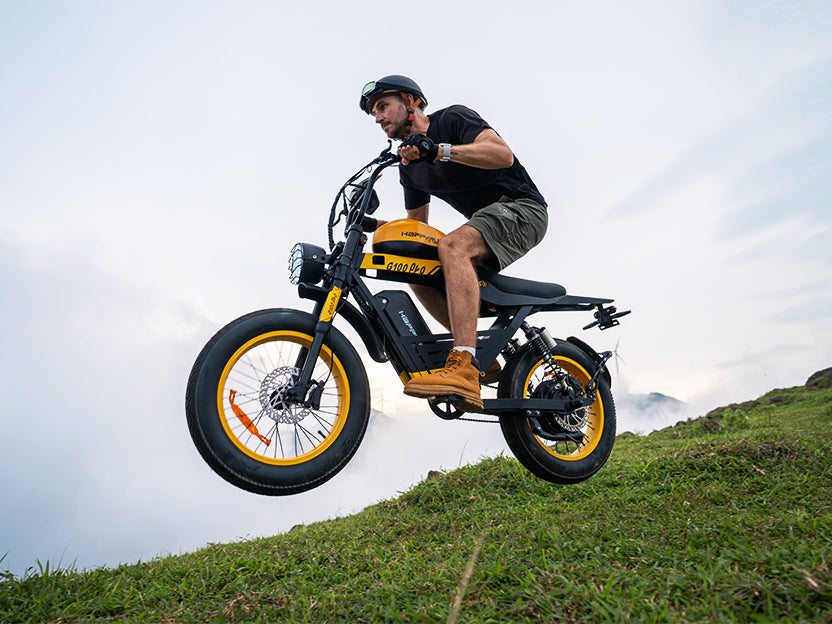

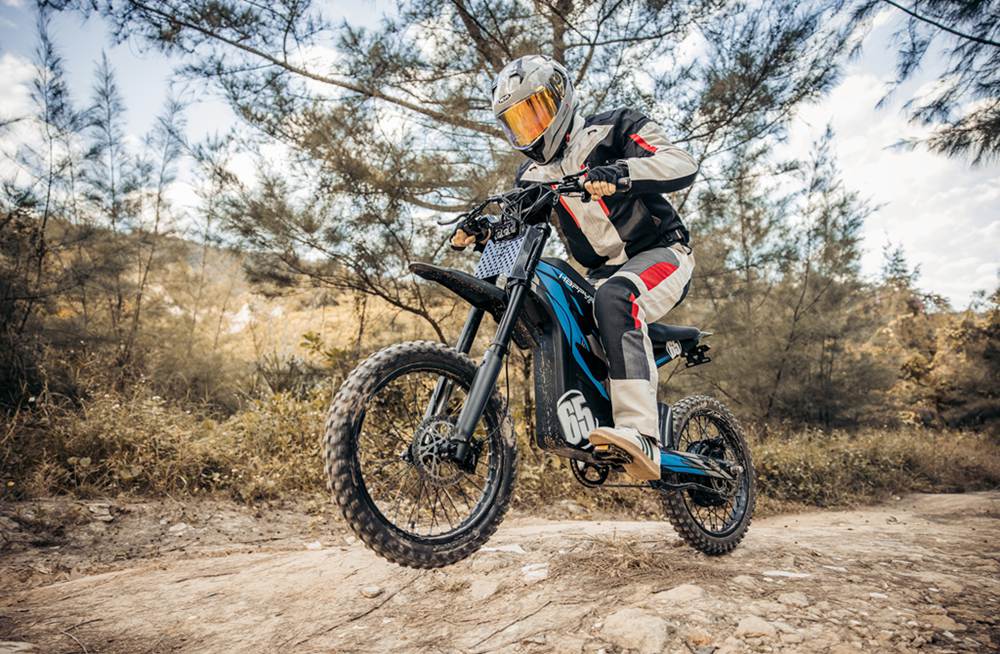
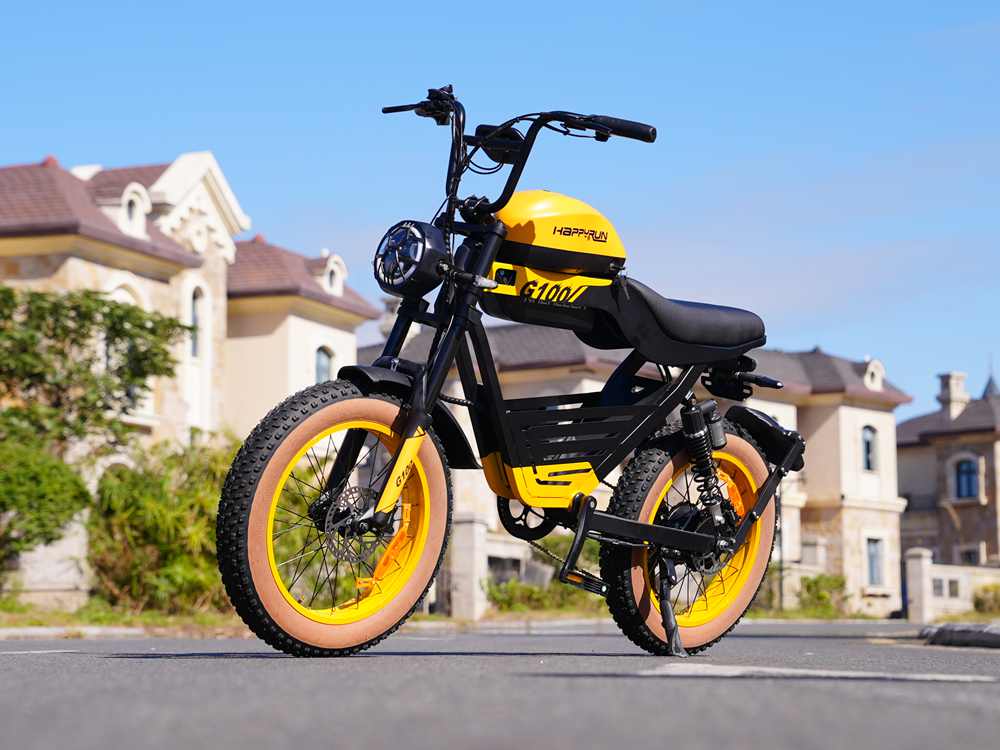
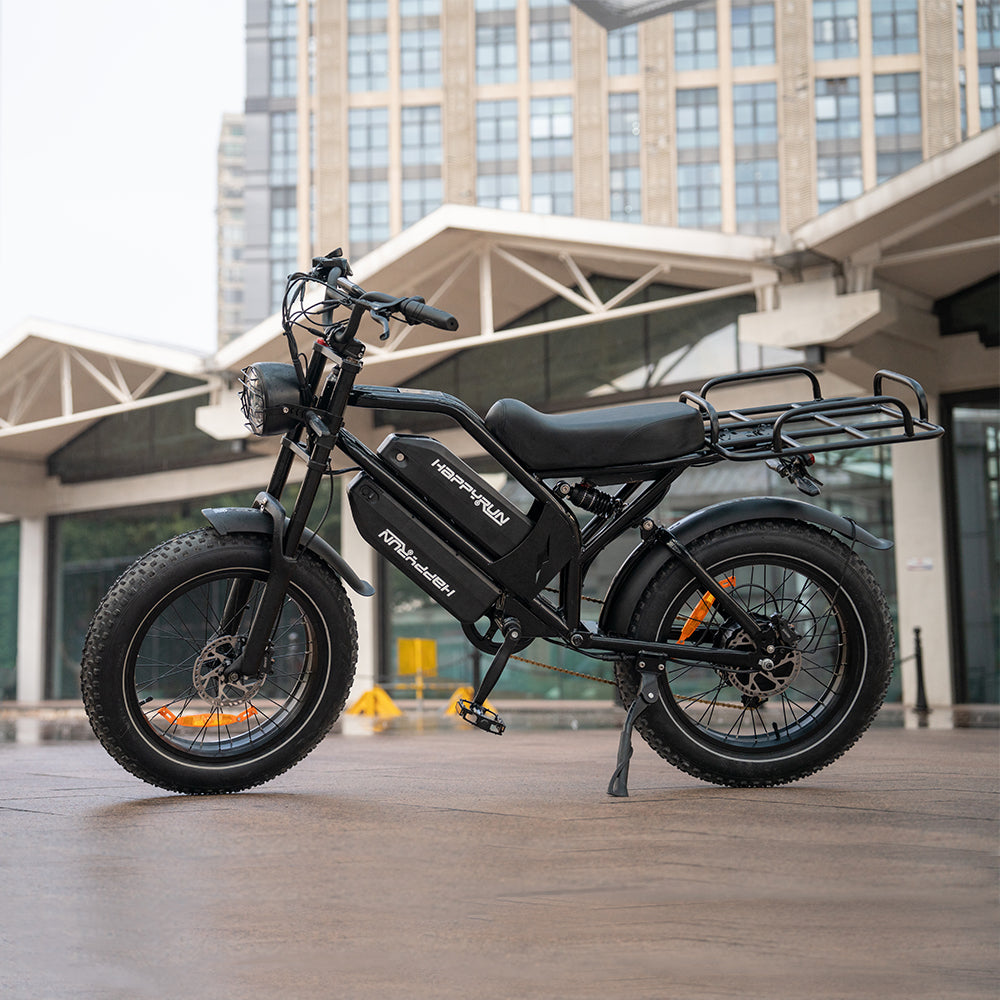
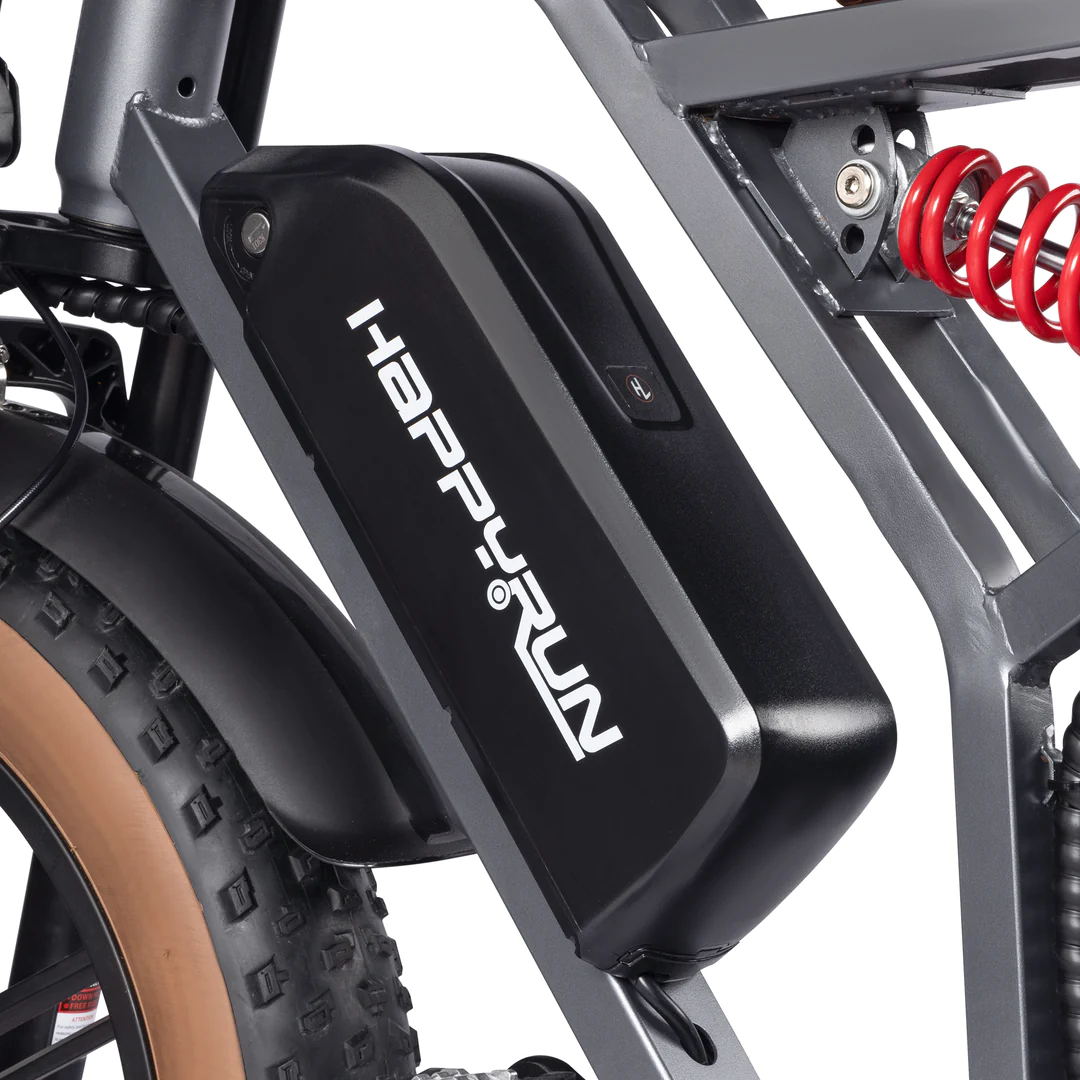
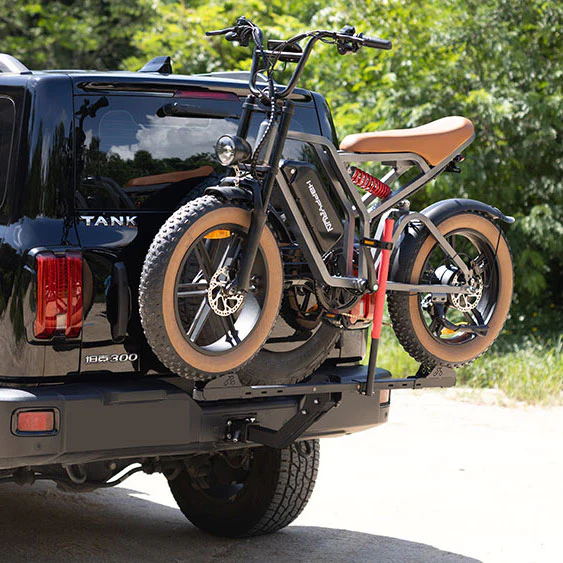



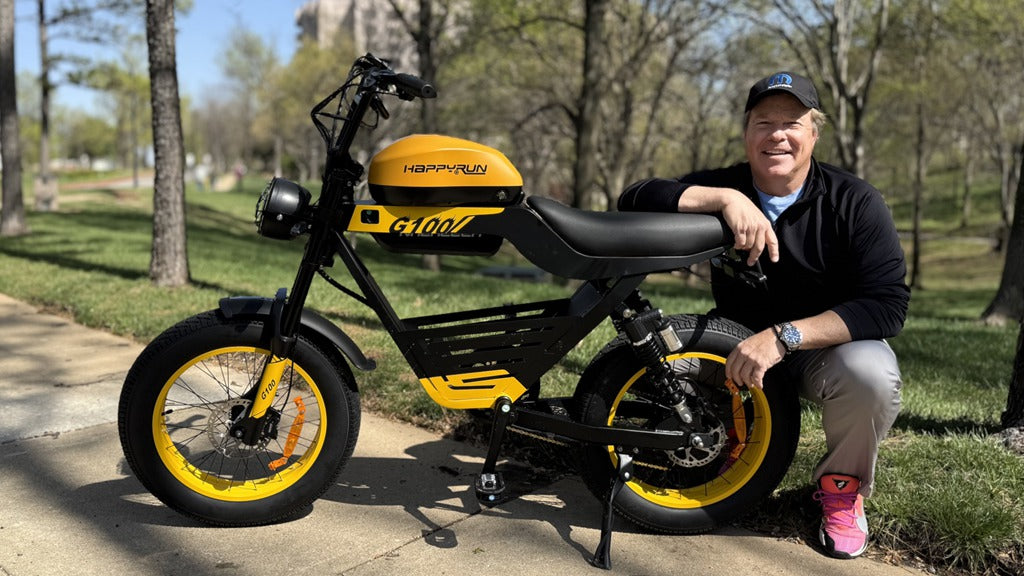

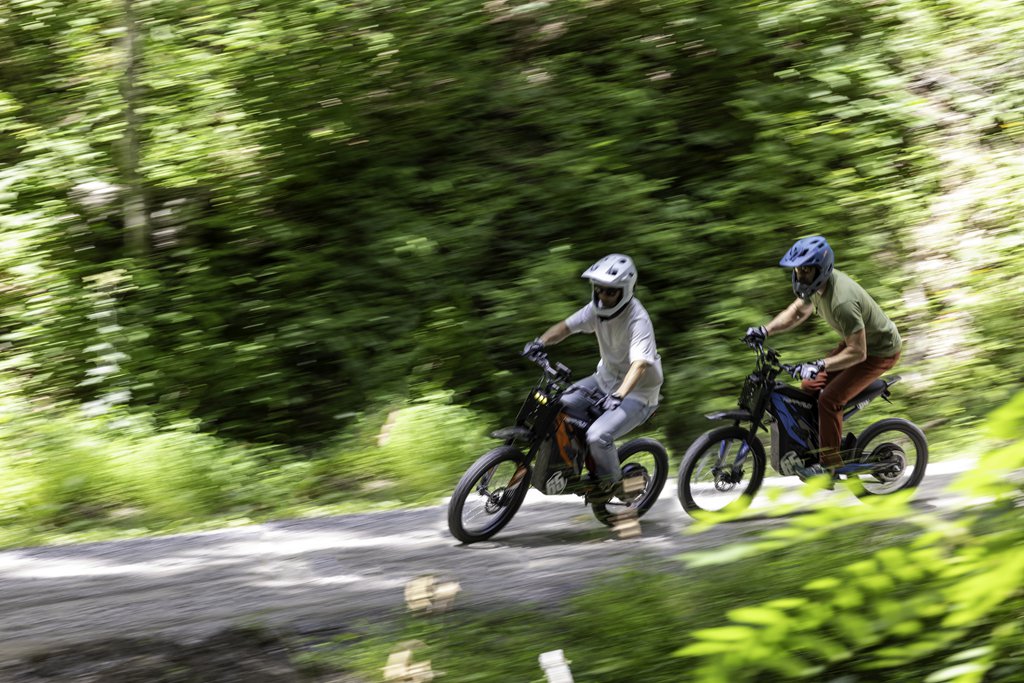
Leave a comment